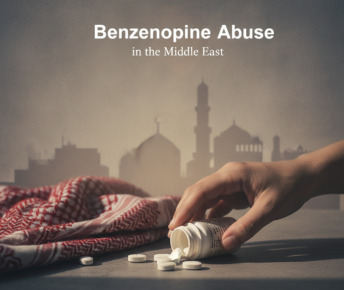Methamphetamine use is often clouded by a variety of myths and misunderstandings, many of which arise from the drug's severe adverse effects and its influence on physical appearance. A frequently mentioned term in conversations regarding meth use is "meth eyes," which refers to the distinctive look of the eyes in individuals who consume methamphetamine. This read seeks to dispel prevalent myths surrounding methamphetamine, elucidate the reality of "meth eyes," and emphasize the significance of effective treatment for methamphetamine addiction. Additionally, we will examine the types of methamphetamine such as crystal meth, and underscore the resources available for individuals in need of assistance, including Samarpan Recovery.
Understanding Methamphetamine and Its Effects
Methamphetamine, often referred to as meth, is a powerful stimulant that affects the central nervous system. Known for its highly addictive nature, methamphetamine is used illicitly in various forms, including powder, pills, and crystal meth. The drug's effects on the body and mind can be profound and damaging.
Types of Methamphetamine
- Crystal meth: This is the most potent form of methamphetamine, appearing as clear crystals resembling shards of glass. Crystal meth is typically smoked, which leads to an intense and immediate high.
- Powder meth: Often referred to as crank or speed, powder meth can be snorted, smoked, or injected. It is less potent than crystal meth but still poses significant health risks.
- Meth pills: Sometimes called ecstasy or E, methamphetamine pills are ingested orally. They often contain additional substances, making their effects unpredictable and dangerous.
Debunking Myths About Methamphetamine
- Myth 1: Meth Eyes are the only sign of methamphetamine use
One prevalent myth is that meth eyes are the only visible sign of methamphetamine use. The term meth eyes typically refers to bloodshot, dilated pupils and an overall tired, hollow look. However, these symptoms alone are not definitive indicators of meth use. Other signs, such as severe weight loss, dental issues, and skin sores, also accompany methamphetamine use. - Myth 2: Methamphetamine use is harmless if done occasionally
Another misconception is that the occasional use of methamphetamine is harmless. In reality, methamphetamine use, even in small amounts, can lead to severe health issues, including heart problems, neurological damage, and addiction. The drug's effects on the brain can alter behavior, cognitive function, and emotional regulation, making it highly risky. - Myth 3: Crystal Meth is just a stronger version of meth
While crystal meth is indeed a more potent form of methamphetamine, it is not just a stronger version. The crystal form allows for faster and more intense absorption into the bloodstream, which amplifies its effects and the associated risks. Both forms of methamphetamine share similar side effects, including increased heart rate, paranoia, and hallucinations. - Myth 4: Methamphetamine use only affects the user
Methamphetamine use doesn’t just impact the user; it has far-reaching effects on their loved ones and communities. The behavioral changes, mood swings, and erratic actions of a meth user can strain relationships and create a toxic environment for family and friends. - Myth 5: There is no effective treatment for methamphetamine addiction
A critical misconception is that methamphetamine addiction is untreatable. Various treatment options are available, including behavioral therapies, counseling, and support groups. Methamphetamine treatment often involves a combination of approaches tailored to the individual’s needs.
Methamphetamine Side Effects
The side effects of methamphetamine use are both physical and psychological:
- Physical effects: These include severe dental problems (often called "meth mouth"), extreme weight loss, skin sores, and increased heart rate. Prolonged use can lead to organ damage and neurological issues.
- Psychological effects: Users may experience paranoia, hallucinations, aggression, and severe mood swings. Chronic use can result in long-term cognitive impairments and mental health disorders.
Effective Methamphetamine Treatment
Effective treatment for methamphetamine addiction is crucial for recovery. Here’s how it works:
- Medical detoxification: The first step in treatment often involves medical detoxification to manage withdrawal symptoms safely. This process helps the body rid itself of methamphetamine while minimizing discomfort.
- Behavioral therapy: Therapy is a core component of methamphetamine treatment. Cognitive-behavioral therapy (CBT) and contingency management are common approaches used to address the psychological aspects of addiction.
- Support groups: Participation in support groups provides individuals with a network of peers who understand their struggles and can offer encouragement and advice.
- Aftercare planning: Aftercare programs help individuals transition from treatment to everyday life. This may include continued therapy, support groups, and relapse prevention strategies.
Conclusion
Understanding the realities of methamphetamine use and debunking myths about "meth eyes" is essential in addressing and preventing addiction. Recognizing the serious side effects of methamphetamine and seeking effective treatment are crucial steps in overcoming this challenging addiction. Resources like Samarpan Recovery play a vital role in providing the support and care needed for recovery. By dispelling misconceptions and emphasizing the importance of comprehensive treatment, we can work towards a healthier and more informed approach to addressing methamphetamine addiction.
Highlighting Samarpan Recovery
For those struggling with methamphetamine addiction, Samarpan Recovery offers comprehensive and personalized treatment options. Here’s how Samarpan Recovery supports individuals:
- Personalized treatment plans: Samarpan Recovery creates customized treatment plans based on each individual’s needs. This includes medical detoxification, therapy, and aftercare planning.
- Holistic approach: The center employs a holistic approach, integrating wellness practices such as yoga and meditation into the treatment process to address all aspects of recovery.
- Experienced professionals: Samarpan Recovery’s team of skilled professionals specializes in addiction treatment, ensuring that individuals receive the highest quality care and support.
- Supportive environment: The center fosters a supportive and nurturing environment, where individuals can share experiences and build a support network.
- Ongoing support: Recovery is an ongoing process, and Samarpan Recovery offers aftercare programs to help individuals maintain their sobriety and reintegrate successfully into daily life.
























 Yes, many offer serene environments and solid therapeutic frameworks. However, quality varies, so it’s essential to research accreditation, staff credentials, and therapeutic depth.
Yes, many offer serene environments and solid therapeutic frameworks. However, quality varies, so it’s essential to research accreditation, staff credentials, and therapeutic depth.




